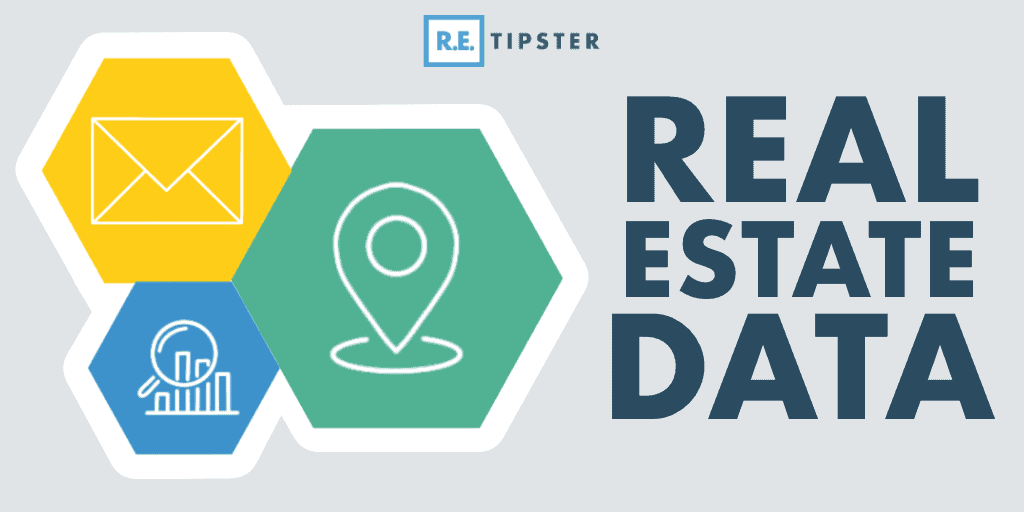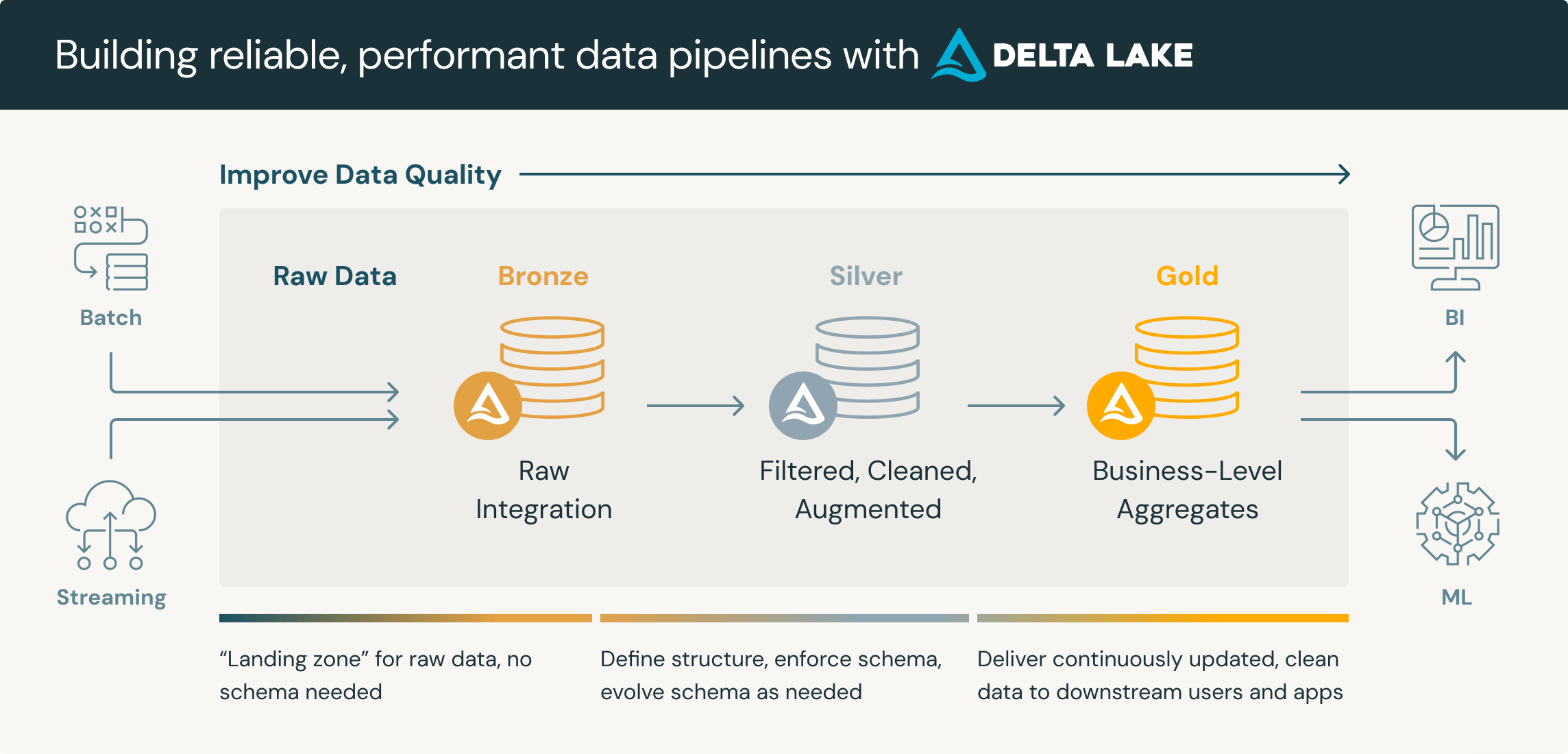In today’s data-driven world, effectively managing and refining data is crucial to gaining actionable insights. As organizations grapple with vast amounts of information, the need for robust data architectures has never been greater. Enter the Medallion Architecture—a versatile design pattern that has gained popularity in modern data management, particularly within lakehouse and data warehouse environments. This approach, made popular by Databricks, is transforming how companies manage and refine their data.
Let me take you on a journey through my experience working at a data company, “DataX” to illustrate how Medallion Architecture can solve complex data challenges and deliver immense value.
The Challenge: Managing Diverse Real Estate Data
 Meet DataX, a data company that specializes in collecting and analyzing real estate data from various listing websites over the past 12 years. DataX uses sophisticated web scraping tools and data collection processes to gather a wide range of information, including:
Meet DataX, a data company that specializes in collecting and analyzing real estate data from various listing websites over the past 12 years. DataX uses sophisticated web scraping tools and data collection processes to gather a wide range of information, including:
- Property Listings: Details of millions of properties listed over the years, including prices, locations, and features.
- Market Trends: Historical pricing trends, market demand indicators, and economic data.
- Customer Interactions: Feedback from users, inquiries, and social media discussions related to properties.
Despite their advanced data collection techniques, DataX faced several challenges:
- Data Silos: Different data types and sources were scattered, making it difficult to get a unified view.
- Data Quality Issues: Inconsistent data formats, missing values, and duplicate records created barriers to accurate analysis.
- Scalability Concerns: As the volume of data grew, traditional data management systems struggled to keep up.
- Slow Insights: Delays between data collection and actionable insights were impacting their ability to serve clients effectively.
The Initial Approach: Traditional Data Warehouse
DataX initially opted for a traditional data warehouse to consolidate their data. The data warehouse centralized data from various sources, enabling better reporting and analytics. However, they soon encountered several limitations:
- Rigid Schema: The predefined structure of data warehouses made it difficult to adapt to the rapidly changing data landscape.
- High Costs: Scaling the data warehouse to accommodate increasing data volumes became prohibitively expensive.
- Latency Issues: Batch processing in data warehouses introduced delays, making real-time insights nearly impossible.
- Limited Flexibility: Handling unstructured and semi-structured data, such as social media feeds, was cumbersome and inefficient.
DataX needed a more agile, scalable, and flexible solution to manage their diverse data and derive timely insights.
Discovering Medallion Architecture: A New Hope
Enter Medallion Architecture—a data design pattern specifically crafted for modern data environments like lakehouses and data warehouses. Medallion Architecture offered DataX a way to logically organize their data through progressive layers, enhancing both structure and quality as data flows through each stage.
What is Medallion Architecture?
 Medallion Architecture organizes data into three distinct layers:
Medallion Architecture organizes data into three distinct layers:
- Bronze Layer: Raw, unprocessed data stored in its native format.
- Silver Layer: Cleaned, filtered, and enriched data ready for analysis.
- Gold Layer: Highly refined, business-ready data optimized for insights and decision-making.
This layered approach, sometimes called a “multi-hop” architecture, ensures that data is incrementally improved, making it more reliable and actionable at each stage.
Implementing Medallion Architecture at DataX
 DataX embraced Medallion Architecture within a lakehouse environment, integrating it with their existing data warehouse. Here’s how they transformed their data strategy:
DataX embraced Medallion Architecture within a lakehouse environment, integrating it with their existing data warehouse. Here’s how they transformed their data strategy:
-
Bronze Layer: Centralized Raw Data Storage
- DataX ingested data from all sources into the Bronze layer without any transformation.
- This served as a comprehensive repository, ensuring no data was lost and maintaining data integrity.
-
Silver Layer: Data Cleansing and Transformation
- Data engineers processed the raw data to remove duplicates, correct errors, and standardize formats.
- Enrichment processes added valuable context, such as property categorization and market trend analysis.
- The Silver layer provided a reliable foundation for more detailed analysis.
-
Gold Layer: Business-Ready Data for Insights
- The refined data in the Gold layer was tailored for specific business needs, such as property valuation models, market trend reports, and customer behavior analysis.
- Advanced analytics, machine learning models, and real-time dashboards were built on top of this high-quality data.
Key Advantages Realized by DataX
-
Progressive Data Quality Improvement
- Data quality was systematically enhanced at each layer, ensuring that insights were based on reliable and accurate information.
-
Enhanced Scalability and Flexibility
- The Medallion Architecture easily scaled with DataX’s growing data volumes, accommodating new data sources and types without major overhauls.
- It supported both batch and real-time data processing, enabling timely insights and agile responses to market changes.
-
Cost Efficiency
- By optimizing data storage and processing through layered refinement, DataX reduced costs associated with data warehousing and eliminated the need for extensive reprocessing.
-
Improved Data Governance and Compliance
- Clear separation of data layers facilitated better data governance, lineage tracking, and compliance with regulatory requirements.
-
Seamless Integration with Existing Data Warehouse
- The Medallion Architecture complemented the traditional data warehouse by feeding refined data into it, enhancing its capabilities without replacing it entirely.
When to Choose Medallion Architecture Over a Traditional Data Warehouse
While traditional data warehouses are powerful tools for centralized data management and reporting, Medallion Architecture shines in scenarios where:
- Data Variety and Volume are High: When dealing with diverse data types and rapidly growing data volumes, the layered approach provides the necessary structure and scalability.
- Need for Agility and Flexibility: If your data strategy requires adapting to new data sources and types quickly, Medallion Architecture offers the flexibility to do so.
- Progressive Data Refinement is Crucial: When your use cases benefit from incrementally improving data quality, Medallion Architecture ensures each stage enhances the data’s usability.
- Real-Time Insights are Needed: For applications requiring timely analytics and decision-making, the architecture’s support for both batch and streaming data is essential.
Harmonizing Medallion Architecture with Data Warehouses
Rather than viewing Medallion Architecture and traditional data warehouses as mutually exclusive, DataX demonstrated how they can work together harmoniously:
- Raw Data Ingestion in Lakehouse (Bronze Layer): All incoming data is stored in its raw form within the lakehouse.
- Data Processing and Refinement (Silver and Gold Layers): Data is progressively cleaned and enriched within the lakehouse.
- Refined Data Integration with Data Warehouse: The highest quality data from the Gold layer is then fed into the data warehouse for advanced reporting, BI tools, and legacy applications.
This hybrid approach leveraged the strengths of both architectures, providing DataX with a robust, scalable, and flexible data management system.
A Strategic Advantage
By adopting Medallion Architecture, DataX transformed their data strategy from fragmented and inefficient to cohesive and insightful. The key advantages—progressive data quality improvement, scalability, flexibility, cost efficiency, and enhanced governance—enabled them to harness the full potential of their data.
So, in your next big data project or product, take some time to investigate whether Medallion Architecture might work for you and your team. You can always move back to a traditional data warehouse if this architecture doesn’t fit your business case.
References:

 Meet DataX, a data company that specializes in collecting and analyzing real estate data from various listing websites over the past 12 years. DataX uses sophisticated web scraping tools and data collection processes to gather a wide range of information, including:
Meet DataX, a data company that specializes in collecting and analyzing real estate data from various listing websites over the past 12 years. DataX uses sophisticated web scraping tools and data collection processes to gather a wide range of information, including: Medallion Architecture organizes data into three distinct layers:
Medallion Architecture organizes data into three distinct layers: DataX embraced Medallion Architecture within a lakehouse environment, integrating it with their existing data warehouse. Here’s how they transformed their data strategy:
DataX embraced Medallion Architecture within a lakehouse environment, integrating it with their existing data warehouse. Here’s how they transformed their data strategy: